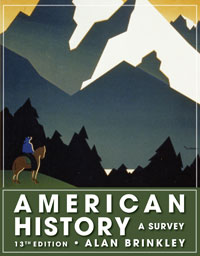1 A) Asians. B) freed slaves. C) French. D) Mexicans. E) Indians. 2 A) Trans-Mississippi Wasteland. B) Intermountain Barrens. C) Prairie Wilderness. D) Great American Desert. E) All these answers are correct. 3 A) South Dakota. B) Kansas. C) Oklahoma. D) Wyoming. E) Arkansas. 4 A) Comanche B) Crow C) Pawnee D) Blackfeet E) Sioux 5 A) Most died due to epidemic diseases brought in by the miners. B) The ones who could speak English adapted well and continued to dominate real estate ownership. C) Most emigrated back to Mexico or Arizona. D) Many lost status and land and were excluded from the prosperity of the statehood period. E) They became merchants in San Francisco and Sacramento. 6 A) They tended to congregate together and maintain Chinese culture. B) Some secret societies ("tongs") engaged in crime. C) Many of the early female Chinese immigrants had been sold into prostitution. D) The Chinese were perceived as lazy slackers who would not work hard. E) Americans did not resent Chinese immigrants; they admired them for their hard work. 7 A) freed blacks. B) European immigrants. C) from the poorest classes of eastern cities. D) from the working and middle classes of the eastern United States. E) landless farmers from the post-war South. 8 A) One hundred sixty acres was not enough land in the West. B) The law did not provide capital for machines and the like. C) The land was too costly for most settlers. D) None of these answers is correct. E) All these answers are correct. 9 A) was plentiful with all the new arrivals. B) offered excellent job security. C) often pitted workers of different races against each other. D) made it easy for owners of businesses to expand their operations. E) was quickly unionized. 10 A) chemical B) quartz (lode) C) strip (open pit) D) hydrolic (water pressure) E) placer (pan) 11 A) Nevada B) Colorado C) Kansas D) South Dakota E) Montana 12 A) rounding up the cattle from great distances all over the range for branding in the spring. B) moving the cattle south to Texas in the winter and north to Colorado, Wyoming, and Montana in the spring to take advantage of the best pasture. C) using cattle as oxen to pull covered wagons for settlers seeking homesteads in the West. D) herding cattle from the ranges in Texas and other remote areas to the nearest accessible railroad loading point so that the cattle could be shipped to slaughterhouses in the East. E) cattle drives that avoided homesteaded land. 13 A) Northern whites and African Americans B) Native Americans and Southern whites C) Southern whites and African Americans D) Hispanics and Southern whites E) Chinese and Hispanics 14 A) Oliver Wendell Holmes. B) C. W. McCune. C) Albert Bierstadt. D) Frederick Jackson Turner. E) Charles A. Beard. 15 A) presented an accurate depiction of Western life. B) were not very popular with American audiences. C) featured Buffalo Bill Cody, who had never actually worked in the West. D) incorporated Indians into the entertainment. E) featured buffalo shoots. 16 A) Indian Lands Commission. B) Native American Administration. C) Office of Assimilation and Concentration. D) Bureau of Indian Affairs. E) Freedmen's Bureau. 17 A) Sitting Bull and Black Kettle B) Black Eagle and Geronimo C) Crazy Horse and Sitting Bull D) Geronimo and Iron Eyes E) Red Eagle and Crazy Horse 18 A) resulted in an Indian victory. B) turned into a massacre of Indians, including women and children. C) was Custer's redemption after the Battle of Little Big Horn. D) was started by a sneak attack by the Sioux on the Seventh Cavalry. E) led to a revision of Indian policy. 19 A) weaken tribes, allot land to individual Indians, and promote assimilation. B) geographically disperse the reservations so it would be more difficult for Indian warrior forces to unite. C) increase tribal loyalty and reduce violence by allowing chiefs and tribal councils to act autonomously on the reservations. D) restore economic viability to the nomadic way of Plains Indian life by revitalizing the bison herds. E) abolish the reservations. 20 A) European investors excited about the developing American West. B) Wall Street investors with close ties to cattle and mining interests. C) small investors such as farmers and local merchants who wanted to attract rail lines to their communities. D) government subsidies in the form of favorable loans and land grants. E) All these answers are correct. 21 A) split rails B) chain link C) pickets D) barbed wire E) chicken wire 22 A) subsistence in nature. B) commercially oriented. C) truck farming. D) being displaced by industry. E) family oriented. 23 A) high interest rates, inequitable freight rates, and inadequate currency B) high interest rates, persistent production shortfalls, and poor-quality farm machinery produced by American factories C) inadequate currency, persistent production shortfalls, and poor-quality farm machinery produced by American factories D) poor-quality farm machinery produced by American factories, inequitable freight rates, and inadequate currency E) high interest rates, inequitable freight rates, and poor-quality farm machinery produced by American factories





